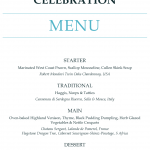#Dyalog16 – Vibeke Ulmann Wednesday 12th October was dedicated to celebrating the 50th Anniversary of APL becoming an interactive programming language. And what day we had. This blog will aim to give you a few impressions from what turned out … Continue reading
Category Archives: Events
Report from Dyalog ’16 – Thursday
Gallery

This gallery contains 5 photos.
Today was the last day of the user meeting, a further half-day celebrating 50 years of APL, with presentations both looking back at the history of APL from its beginnings to the present day, and looking forward to the future … Continue reading
Winning the APL Programming Contest – Finance Category
Gallery
#Dyalog16 – Vibeke Ulmann Today we had the third of the 3 grand prize winner presentations. Zack Batik is 23 years old and is in his second year studying for an undergraduate in Maths and Economics at the University of … Continue reading
Report from Dyalog ’16 – Wednesday
Gallery

This gallery contains 13 photos.
Today we started to celebrate APL’s 50 year history, looking at how it has developed since IBM created the first clear workspace on 27 November 1966, and how it will continue to develop in the future. There was audience participation – prior to … Continue reading
Winning the APL Programming Contest – Bioinformatics Category
Gallery
#Dyalog16 – Vibeke Ulmann Today we had the second of the 3 grand prize winner presentations. Marinus Oosters is 25 years old and is in his second year studying for a Masters in Computer Science at the University of Utrecht. … Continue reading
Cooking with Dyalog – Kai Jaeger (APL Consultant) and Stephen Taylor (Equiniti Claybrook)
Gallery
#Dyalog16 – Vibeke Ulmann The presentation today was centred around the fact that many software programmers – and especially those who programme in Dyalog APL – have been involved in their applications for many years. Hence, they have not had … Continue reading


 Follow
Follow